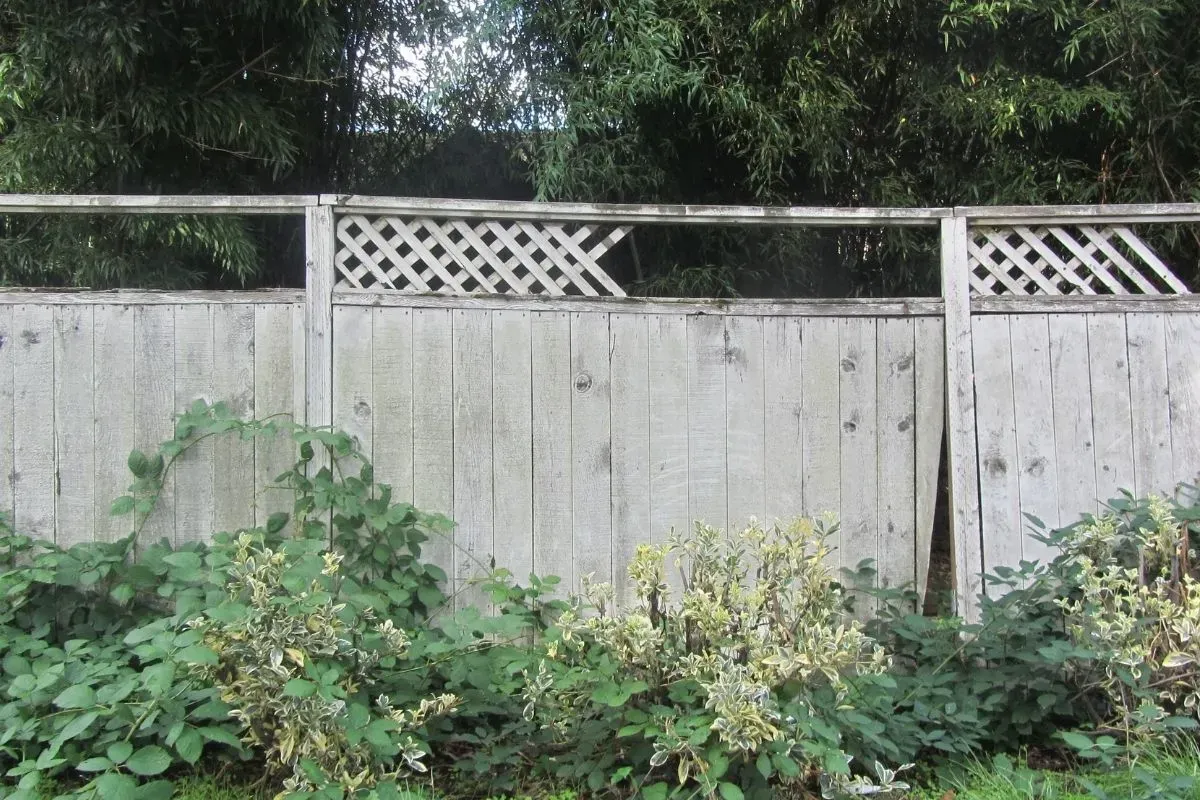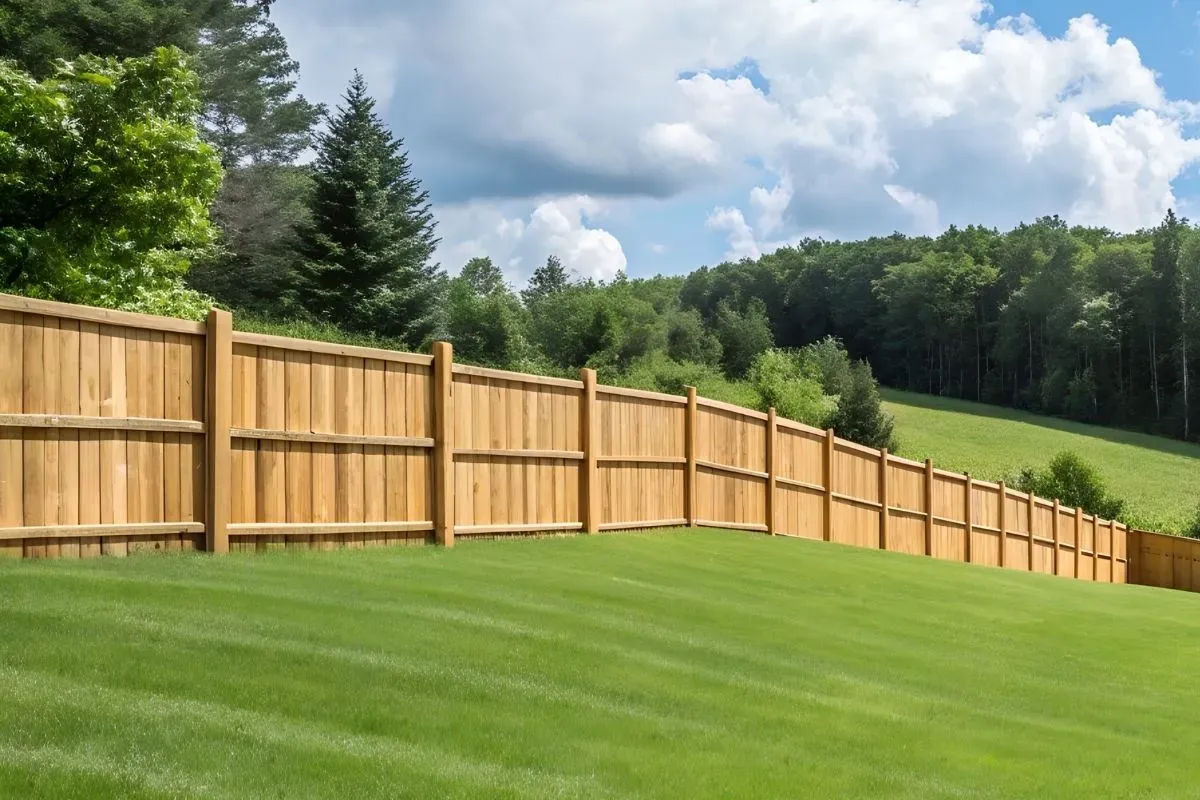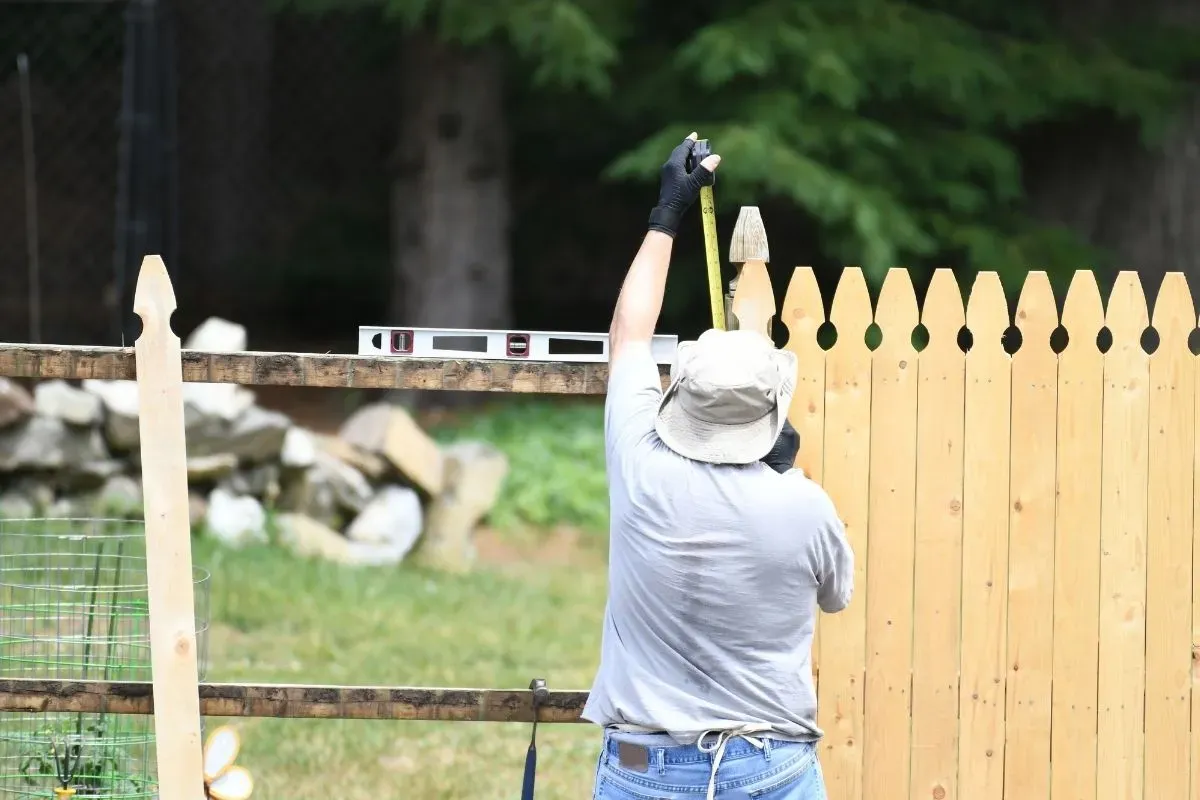When dealing with uneven terrain, fencing can quickly become a challenge. That’s where sloped fencing comes into play. Designed to adapt to hills and gradients, sloped fences not only bring order to chaotic landscapes but also improve privacy, security, and curb appeal. But how can you effectively install a sloped fence, and what options are best for your property? This guide will walk you through everything you need to know, from concepts to construction.
What Is Sloped Fencing and Why Is It Important?
Sloped fencing refers to fences built on land that isn’t level, using techniques designed to maintain functionality and visual appeal despite the incline. This approach prevents gaps beneath the fence that could compromise privacy, security, and appearance. Whether you’re seeking protection, looking to define boundaries, or enhancing your home’s aesthetics, sloped fencing ensures these benefits remain intact, even on uneven terrain and hilly areas.
Sloped fencing is essential for any homeowner whose property features hills, valleys, or gradients. Without proper planning, traditional fencing can leave unsightly gaps or structural weaknesses on these surfaces. By choosing the right sloped fence, you can create a smooth, uniform look that effectively handles your property’s specific challenges.
Types of Fencing for Sloped Areas
When installing a sloped fence, two primary techniques dominate the market—stepped fences and racked fences. Each has unique benefits and drawbacks, making it important to weigh your options depending on your terrain and design preferences.
Stepped Fencing
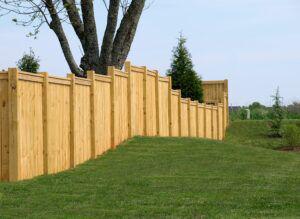
A stepped fence aligns each individual panel horizontally, resembling stairs as it follows the natural slope.
Pros:
- Ideal for significant slopes or sharp inclines.
- Uses standard, pre-assembled fence panels, which can reduce material costs.
- Provides a neat, structured appearance suitable for modern or industrial aesthetics.
Cons:
- Leaves gaps beneath the panels, which may reduce privacy or allow animals to enter.
- Requires custom work if you want the gaps filled, increasing the price.
- Can look rigid in natural or organic settings.
Racked Fencing
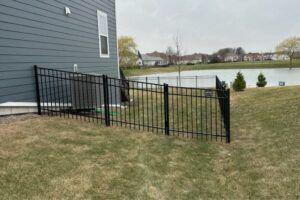
A racked fence, sometimes referred to as a contoured fence, involves connecting pickets or boards directly to rails that follow the slope’s angle.
Pros:
- Offers a seamless look as the fence hugs the ground, eliminating gaps.
- Provides better security for pets and children.
- Blends well with natural landscapes, giving it a polished yet organic appearance.
Cons:
- Installation can be labor-intensive due to the need for precise adjustments.
- Costs may increase for customized or irregularly shaped panels.
- Limited to slope angles—extremely steep areas may still need stepping.
Both systems can be tailored to various materials, including wood, vinyl, chain-link, or metal, ensuring you’ll find an option that complements your home’s style.
How to Build a Fence on a Slope (Step-by-Step)
Before you begin, it’s vital to assess the landscape, gather materials, and ensure compliance with local regulations. Follow this guide for a durable and well-aligned fence:
1. Gather Materials and Tools
You’ll need:
- Fence posts, panels, or boards
- String and stakes for layout
- Posthole digger (you can find at Home Depot)
- Concrete mixture
- Level
- Measuring tape
- Saw (for custom adjustments)
- Hammer or drill
2. Plan and Measure
- Walk along the slope and measure the incline using a level and measuring tape.
- Mark the fence line by staking the corners and running string tightly between them.
3. Install Fence Posts
- Dig postholes at intervals suited to your fence panels or boards (typically 6-8 feet).
- Ensure each hole is at a consistent depth, even along the slope.
- Insert posts, checking for plumb alignment with your level, and fill holes with concrete. Allow the concrete to cure for 24 hours.
4. Attach Rails and Panels
- For stepped fencing: Attach rails and pre-assembled panels at even intervals, leveling each horizontally as you move up/down the slope.
- For racked fencing: Secure the bottom rail to follow the slope, then attach pickets individually to match the contour of the ground.
5. Add Finishing Touches
- Cut excess lengths from posts for a uniform height.
- Apply paint or stain for weather resistance, if using wood.
- Check for stability by shaking each section gently.
By establishing a strong foundation and paying attention to alignment, your sloped fence will maintain its structural integrity for years.
Key Considerations for Sloped Fence Installations
Local Regulations
Before breaking ground, check with your local planning office for regulations. Many municipalities dictate height limits and require permits prior to fence construction.
Maintenance
The slope can expose your fence to additional wear from water runoff or shifting soil. Materials like vinyl and treated wood require less upkeep than untreated options, ensuring your investment stands the test of time.
Budget vs. Durability
Although racked fences often carry higher upfront costs, their superior durability and weather resistance may save money long-term. Identify the material and style that best fit your budget and align with your envisioned lifespan.
Leave the Hard Work to the Experts
Building a sloped fence can feel overwhelming, but you don’t have to face it alone. For a smooth process and impeccable results, consider enlisting professionals like Top Rail Fence. With unmatched expertise and state-of-the-art tools, we customize every fence to fit your property’s needs. Whether you’re dealing with a gentle hill or steep incline, we’ll ensure your fence is robust, stylish, and perfectly aligned.
Contact Top Rail Fence today for a free consultation! Put your project in trusted hands and enjoy the peace of mind that comes with hiring proven professionals.
Sloped Fencing Frequently Asked Questions (FAQs)
What is the best material for sloped fencing?
The ideal material depends on your needs, budget, and local climate. Treated wood, vinyl, and metal options like aluminum are popular due to their strength, weather resistance, and design flexibility. Each offers distinct benefits; for example, vinyl and metal require less maintenance, while wood provides a classic appearance.
How much does it cost to install a sloped fence?
Costs can vary widely based on the size of your property, chosen materials, slope severity, and installation complexity. On average, sloped fencing may be slightly more expensive than fencing on level ground due to the additional labor and customization required. For accurate pricing, request a detailed estimate tailored to your property.
Can I install a sloped fence myself or should I hire a professional?
While DIY installation is possible for those with experience and the right tools, professional installation ensures precise alignment, long-term durability, and compliance with local regulations. Hiring experts like Top Rail Fence provides peace of mind and a finished product that will last for years.
What type of gate works best for a sloped driveway?
Consider a cantilever gate for a sloped driveway. These gates are ideal for properties with uneven ground, gravel driveways, or steep slopes where a ground track would be impractical. Learn more about cantilever gates in our Cantilever vs Rolling Gates blog.
Still have questions? Reach out to Top Rail Fence for personalized advice and expert support for your fencing project.
